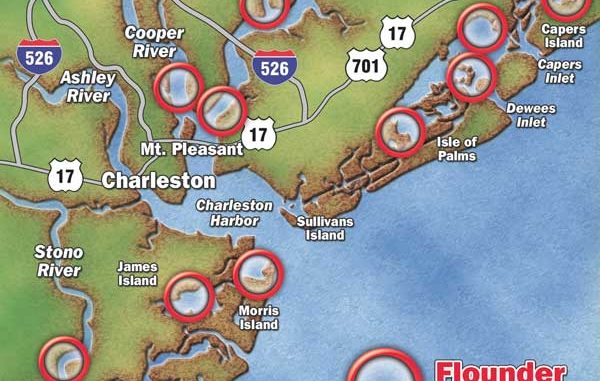
Go old school to catch all the flounder you want this month.
Flounder is certainly one of the most popular species of inshore saltwater fish during the summer months. Some anglers go to extremes to make a good flounder catch, while others work the basics and keep the process simple. By keeping it simple, they believe the overall the process is more enjoyable and the end result just as good or better.
Matt Willis, a 42-year old Summerville resident, fishes the Charleston-to-Bulls Bay are for a variety of inshore species. Flounder is certainly one of his targeted species, and he considers July to be a prime time to use traditional tactics to tackle the flounder fishery.
“Some fishermen get really high-tech on some of the inshore species, but it’s really not necessary,” said Willis. “I’ve found that the basic strategies, modified slightly on a daily basis to meet tidal, weather and forage situations, will usually produce excellent results on flounder. I’ve found this especially true during the summer when they are abundant.”
Willis typically uses live bait, with finger mullet and mud minnows both being very productive.
“My basic rigging is really quite simple,” Willis said. “I generally drift fish, letting the current move the boat along. I may use an electric (trolling motor) kicker to fine-tune the drift, especially if I get zeroed in on a specific depth preference. I use the basic Carolina rig with a ¾- to 1-ounce sinker and live-bait hook, usually a 1/0 size. The Eagle Claw (style) 84 is one good hook to use. I’ll use line in the 12- to 15-pound class, and I always use a wire leader because of the flounder’s sharp teeth.”
Willis said flounder can be caught on all stages of the tide, but fishermen will have to change places to keep up with the movement of the forage, which usually dictates where the most flounder will be found.
“Generally, the tides are the top priority when determining where to fish,” Willis said. “Time of day is really secondary; however, if I could pick the ideal time and tide for flounder fishing in July, it would be a very early morning low tide. Working the rising tide at dawn has produced some of the best catches for me, but that’s just the ideal situation I’ve found. Flounder can be caught in good numbers throughout the day.
“When fishing at low tide, I’ll begin by drifting the mouths of creeks, and I will drift with the current,” Willis said. “But as I drift over the creek mouth with a couple of rigs out in rod holders, I will also sometimes cast a rig and work it back by hand. This enables me to cover more water depths and territory more quickly. By experimenting with depths, I stay more engaged in the fishing and often put a pattern together quickly.
“My general plan is to start fishing in fairly shallow water and work deeper until I find the productive depth. If the baitfish situation is not good, I’m quick to make a move. Flounder are ambush predators; you must have bait in the area you’re fishing to hold ample numbers of flounder.
“Sometimes, the big creeks emptying into the waterway or into a large bay will be good, while on other days, it’s the secondary creeks that empty into larger creeks that will produce the best action,” he said. “This simply requires searching to determine. If I get on a good pattern, often that basic pattern will hold solid for a few days. If I get to fish on consecutive days, I’ll certainly work the patterns that were productive the previous day on the same tidal condition. I may change specific locations to find areas with plenty of fish, but I keep the same features in the game plan.”
Chuck Robinson of Awendaw is another flounder expert who also employs a simple, but highly effective technique on the incoming tide. Robinson fishes the mouths of the major creeks or rivers that intersect with the ocean. He drift-fishes the incoming tide, but he has a slightly modified flounder-catching plan. He fishes with bigger-than-average baits and specializes in catching really big flounder.
“I’ll go out to the breakers on the incoming tide and drift in with the current,” Robinson said. “Any place where a major creek, river or bay meets the ocean is a prime place around the Charleston area, as long as there’s plenty of forage in the area. That’s usually not a problem in these places on an incoming tide. One of the differences in what I do is to use big bait. I like a 3-inch or larger mullet that are bigger than you can generally buy, so I’ll take a cast net and catch my own bait.
“I’ll use a rig similar to a commercial flounder rig, but I like one of the Lindy-type walking sinkers on my rig,” he said. “I prefer the sinker in the 1- to 1½-ounce sizes. The depth and amount of tidal current will dictate the amount of weight. I’ll have the bait about 18 inches behind the sinker on a wire leader connected to a barrel swivel.”
Robinson said it’s a good idea to use rod holders or to physically hold on to the rig. The big flounder he fishes for are often very aggressive when taking a big bait. The best depth will vary, but he likes to be along the edge of the drop of the creek, river or mouth of the bay.
“The bite from a big flounder is often so aggressive it almost pulls the rod out of my hand,” he said. “I’ll be fishing six to 10 feet deep at low tide and up to 10 to 15 feet deep as the tide rises. This type of fishing is usually good throughout the day; it’s the incoming tide that’s the key to my fishing.”
Robinson said he catches a lot of flounder in the 18- to 22-inch class — and often larger. He also said that sometimes he’ll find several really big flounder in a tight area.
“When I catch a couple of big flounder back-to-back, I won’t wait long before re-drifting that exact same place. Sometimes, I’ll catch several in a very small area,” he said. “Occasionally, we’ll catch limits of fish, but usually when fishing for the bigger flounder we won’t catch as many. The average size more than makes it worthwhile, but we do sometimes have those days when both quality and quantity come together.”
Flounder can be caught at times other than the incoming tide. Willis said that as the tide gets about halfway up, his gameplan changes.
“Once the tide gets to about halfway up, I’ll begin to focus more on drifting the grasslines,” he said. “I especially favor areas where there are several small creeks or ditches entering the stretch where I’m fishing.”
Willis said that not all stretches of shoreline are created equal in terms of the best places to fish. In addition to having small creeks and ditches intersecting his drift path, he also likes a certain bottom substrate as well.
“I’ve found through the years that a mixed sand and shell bank generally produces best at this time of the year,” Willis said. “Plus, the mud and shell banks will also produce well. But on any given day, you may find fish on a sand bank or a primarily shell bank, so I don’t get locked into a single set pattern in terms of mind-frame. But those are my prime starting points.”
Willis does have one slightly different tactic that works well on flounder, but it’s really designed as a multi-functional technique.
“I occasionally use jigs and grubs, or a DOA trailer, for flounder, and I have found it to be very effective during the summer months,” he said. “I’ll work points on shell and sand banks where there’s a very pronounced point and the water flowing over it creates an eddy situation.
“I prefer casting the jig-and-grub combination, and hopping it along the bottom — or swimming it just off the bottom — will often result in good flounder action,” he said. “The part of the fish-catching process I enjoy is that both good redfish and trout are natural by-products of this type of fishing. I’ll look for points where the water is in the grass on a rising or dropping tide and fish both sides of the point for 30 to 40 yards. You never know if the next ‘thump’ on the jig is another flounder or if it’s a nice redfish or trout. This technique is definitely a win-win situation for the flounder fisherman.”
This summer, keep your flounder fishing simple and you’ll not only catch lots of flounder, but plenty of the doormat size as well.


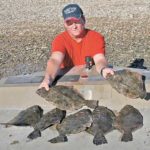
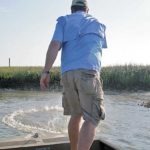
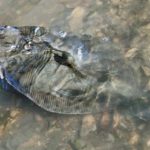
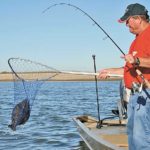
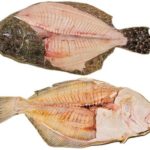



Be the first to comment